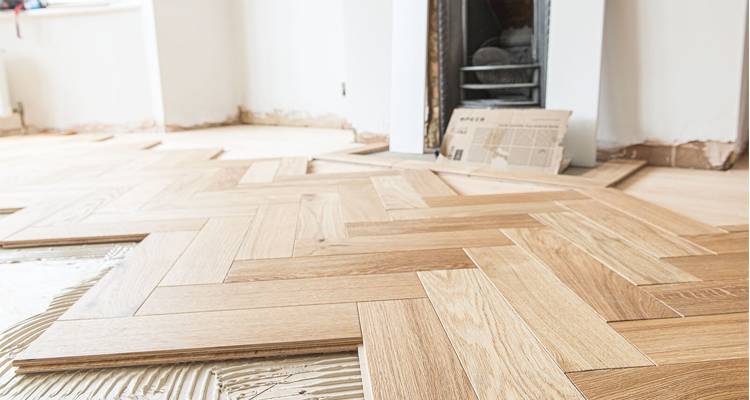Ground Source Heat Pump Cost
- The average ground source heat pump costs around £13,500 in the UK.
- You can apply for £7,500 off the cost of a ground source heat pump installation in 2025.
- How much horizontal and vertical ground source heat pumps cost, and what impacts the prices you're quoted by installers.
- How long it takes a specialist to complete a ground source heat pump installation and expert advice from tradespeople on MyJobQuote.
- How to find and hire a qualified ground source heat pump installer.
How much does a ground source heat pump cost in the UK?
In 2025, the average cost of ground source heat pump installations can be anywhere between £10,000 and £16,000.
However, the Boiler Upgrade Scheme (BUS) allows a qualified installer to apply for £7,500 off off the total cost (unit and installation).
This effectively reduces the average ground source heat pump installation cost to between £2,500 and £8,500 in 2025.
This guide covers everything you need to know about ground source heat pump installations. We dive into what a ground source heat pump is, what the cost of vertical and horizontal ground source heat pump systems are, what impacts the prices you're quoted, and much more!
Ready to get a quote now?
More than 1 million homeowners across the UK use MyJobQuote to find tradespeople near them every year.
And it couldn't be easier.
Submit a few basic details and we'll connect you with ground and air source heating installers near you. There's no cost, no obligation, and no hassle.
Want a few more details about ground source heat pump costs first?
We've got you covered! Check out the full guide below.

£13,500
Table of Contents
- How Much Is a Ground Source Heat Pump?
- Supply Costs
- Additional Ground Source Heat Pump Costs
- How Much Does Ground Source Heat Pump Installation Cost?
- How Long Does Installing a Ground Source Heat Pump Take?
- What Impacts Ground Source Heat Pump Costs?
- What?s Involved in Installing a Ground Source Heat Pump?
- Types of Ground Source Heat Pumps
- Benefits of Ground Source Heat Pumps
- Building Regulations & Planning Permission for Ground Source Heat Pump Installation
- Can I Install a Ground Source Heat Pump Myself?
- Ground Source Heat Pump Removal Cost
- Checklist: Ground Source Heat Pump Installations in the UK
- FAQs
- Sources
How Much Is a Ground Source Heat Pump?
Ground source heat pump installations can range from £10,000 to £16,000. Although, along with the cost of an air source heating pumps this can vary significantly.
For a ground source installation, the pump would be installed using a 6kW heat pump. Within the heat pump, a hot water cylinder with a small horizontal ground loop would be installed. The length of this is usually around 250m to 300m. This would cost in the region of £10,000 to £12,500 for parts and labour.
Naturally, as the size of the installation grows, the price will also. Moving on to the larger ground heat source pumps, a heat pump with a 12kW and 750m ground loop with a 300-litre water cylinder would come to around £15,500 to £16,000.
The above costs are based on a standard installation, whereas projects involving extensive groundwork (such as trenching or borehole drilling) can become much higher due to the additional work required.
It's worth noting some systems may also use buffer tanks or other configurations that may also impact the end cost.

However, it's important to also consider the additional costs, such as digging and groundwork — which can leave a substantial dent in your budget if not taken into account. The cost of this will also vary depending on the pump size.
Some pumps, for example, horizontal systems, may require trenching, while vertical pumps may need a deeper drilling for a borehole.
What type of heating system are you currently using?
This cost can and will vary on a case-by-case basis. This depends on aspects such as location (as local prices may be cheaper/more expensive), contacts (maybe you know a landscaper who can do this for a reduced rate) or availability (taking two days to complete may higher the premium you pay with a professional contractor).
Can a heat pump installer evaluate whether my home will benefit from a heat pump (including the annual costs and savings involved)?
Ground Source Heat Pump Prices
Horizontal Ground Source Heat Pump Price
The following prices include supply and installation, along with the added costs of any groundwork preparation (which can significantly increase the final cost).
| GSHP Size | Estimated Cost |
|---|---|
| 11kW | £20,500 |
| 8kW | £15,950 |
Vertical Ground Source Heat Pump Price
The following prices include supply and installation, along with the added costs of any groundwork preparation (which can significantly increase the final cost).
| GSHP Size | Estimated Cost |
|---|---|
| 11kW | £25,500 |
| 8kW | £21,950 |
Supply Costs
Some people might be capable of doing the installation themselves. This is a cost-effective way if you have the tools and skills for the job.
Below are the costs for purely the supplies with no installation costs. The UK average is around £1,350 per kW.
| Capacity(kW) | Supply Costs |
|---|---|
| 8kW | £10,800 |
| 11kW | £14,850 |
| 35kW | £47,250 |
| 16kW | £21,600 |
| 46kW | £62,100 |
Additional Ground Source Heat Pump Costs
Cavity Wall Insulation Cost
On average, cavity wall insulation in the UK costs around £500 to install, with prices ranging from £350 to £750 depending on the size of property.
Cavity wall insulation is both eco-friendly and economically friendly, as it helps minimilise heat loss meaning less energy is required to keep your home nice and warm.

Insulating a Loft
Boarding and insulating your loft will help prevent heat from escaping through the roof of your property, which is one of the main sources of heat loss and energy waste in UK homes.
When it comes to installing a ground source heat pump, the extra insulation will also make a significant impact in reducing energy bills, ensuring it is performing as effectively as possible.
Underfloor Heating Cost
On average, underfloor heating costs around £800 to get professionally installed.
There are two main types of underfloor heating: dry electric systems and water-based systems. While electric is often cheaper and easier to install, for ground source heat pumps, a wet underfloor heating system is typically preferred.
It can be connected directly to the heat pump and provides consistent, efficient heating across larger spaces, although is the more expensive option to install.

Is it safe and effective to use a heat pump with underfloor heating?
How Much Does Ground Source Heat Pump Installation Cost?
The labour cost is often overlooked. We get so invested in picking the right equipment and how much that is costing and then forget about the extra work that needs to be done. The main part of having a GSHP installed is the groundwork.

The cheaper way to have the pump installed is to have it installed horizontally, as this requires less labour. As shown before, the groundwork for a vertical 12kW heat source pump would need more work.
Three boreholes will need to be drilled, which comes to a total of £15,000 for the drilling alone. For a horizontal heat pump, the price would be around £10,000.
How Long Does Installing a Ground Source Heat Pump Take?
The timescales depend on what needs work doing to it. The main timescale comes before the heat pump is even near the house. The heating system needs to be excavated, which can take one or two days to complete.
Following this, installing the pipes takes place. Then, the tradesperson will make sure the heating system is working to its full potential, and modifying the ductwork will commence, which can take three to four days. The heat pump will then be installed and connected to the ductwork.
What Impacts Ground Source Heat Pump Costs?
The size is a big factor when looking at what can affect the cost. The bigger the pump, the more work will be needed on the other aspects of the job, such as groundwork and heat pump type.
Level of Insulation
The level of insulation is also a big factor. If the insulation is not sufficient, then the new pump is somewhat of a waste as the heat generated is not being preserved in the house.
The insulation depends on how much you need and what type of insulation you buy. The good thing is you can get a full house insulated for a small amount in the grand scheme of the overall project.
Type of Heat Pump
The type of heat pump can cost or save you a big chunk of the budget. A horizontal heat pump is the most cost-effective but may not be suitable for the space you have.
If you have a big pump that needs a large surface area that you cannot cater to, you may need to have a vertical pump which will cost you a lot more.
Location of Property
The location of the property may mean that the contractor may need to do more work than they would for an average customer.
If more work is needed, the contractor may charge more in labour, which could prove rather costly in the long run.
Groundwork
Many of the factors previously mentioned have referred to the groundwork. The groundwork, much like the name suggests, provides the base for the work that needs doing.

The groundwork is the specialist aspect that needs professional assistance to ensure it has been completed to a suitable level.
The more groundwork that needs doing, the more money it will cost as labour charges will increase.
What’s Involved in Installing a Ground Source Heat Pump?
When installing a ground source heat pump, there are five steps involved, including:
- Assess Your Home - An installer evaluates your property to design the best Ground Source Heat Pump system.
- Excavate Loop Fields - Trenches or boreholes (also known as loop fields) are dug to bury pipes that absorb heat from the ground.
- Install Pipes - The pipes are then fitted and filled with water and antifreeze, which then acts as a heat exchanger.
- Modify Existing Heating - Any current distribution infrastructure is adapted to work efficiently with the GSHP.
- Install the Heat Pump - The heat pump is connected and integrated into your heating system.
- Waste Removal - Once any finishing touches are completed, excess waste is removed from the site.

Types of Ground Source Heat Pumps
Horizontal ground source heat pumps fall typically on the cheaper side of GSHP systems as less groundwork is required, so this is a benefit. This is also cheaper, and both vertical and horizontal systems are great renewable sources.

Vertical ground source heat pumps require a lot less space than its horizontal counterpart meaning it is more accessible if you do not have a lot of landmass. Overall a GSHP has an annual running cost average of £975.
For a hybrid heating system, is it better to have a ground source heat pump installed or an air source heat pump?
Benefits of Ground Source Heat Pumps
Installing ground source heat pumps come with a number of long term benefits:
- Boiler Upgrade Scheme (BUS) – You may be eligible for an upfront grant of £7,500 to help reduce the initial installation costs.
- Space Saving - No need for mains gas or visible outdoor equipment, saving space inside and outside your home.
- Money Saving - Without any use of fossil fuels, running costs are much lower, making it a valuable long-term investment
- No Risk of Combustion - The use of renewable heat sources without any gas, eliminates the risk of gas leaks or explosions.

Building Regulations & Planning Permission for Ground Source Heat Pump Installation
Planning permission needs to be looked into. If planning permission is needed, then it is important to apply as this can result in most costs along the line.

Planning permission for making changes to your home can cost up to £206 (although exact fees may vary depending on the location of your property) and you can apply through your local authority.
Now, do you need planning permission for a new GSHP?
Simply put, you don't need planning permission — but you do need to comply with the building regulations. It is best to speak to your local MCS-certified installer to help you with any questions.
Can I Install a Ground Source Heat Pump Myself?
While technically possible to install as a DIY project, it is highly advisable to leave to a professional. The risks involved can be very serious. The most obvious is the complete rewiring of a heating system, which can cause issues with electric shocks, power cuts, flooding, etc.
Without a proper design which has been done by a professional means, the efficiency will be compromised. This may result in the heat pump becoming useless in terms of saving energy and money.

Another main advantage of having the work carried out by a professional is that Boiler Upgrade Scheme (BUS) may apply if implemented correctly.
It is important to note that a DIY installation may affect your warranty and insurance coverage. However, there are some aspects of the project where you can get involved - for example, digging the trenches for a horizontal ground source heat pump in preparation for having tradesmen onsite.
Ground Source Heat Pump Removal Cost
Much like the installation, the DIY option is very much advised against. A professional should be called to remove this, as the same risks apply to the installation.
The removal will require more groundwork to remove the system, and then the system will need to be replaced, so it could end up costing a lot more in the long run.
The labour costs will be at least the same as the installation, if not more, as more work needs to be done.
Checklist: Ground Source Heat Pump Installations in the UK
- Get multiple quotes — It would help if you get quotes from multiple companies and contractors before hiring anyone. This gives you a great chance to review the different prices and work out who best suits the job.
- Look for local hires — Local hires are always great options as they're usually on hand to start the work quickly. They have probably worked on homes in the area for you to take a look at, and you'll save money on travel costs.
- Check their previous work — Contractors will now generally have online portfolios and websites for you to take a look at their previous work and peruse reviews that they have received from past customers. This is a brilliant way to vet them before hiring any company.
- Don't rush! — Take the time to review all the prices and make a decision based on good research of everything listed in this section before choosing a contractor.
- Liability insurance — You should always make sure that the company working on your home has liability insurance to protect both them and you, the customer, from any issues further down the line.
Do I need to use a specialist installer when getting a heat pump fitted?
FAQs
How does a ground source heat pump work?
What size ground source heat pump do I need?
Does a heat pump prevent condensation?
How long will a heat pump last?
Are heat pumps environmentally friendly?
Sources
https://www.gov.uk/apply-boiler-upgrade-scheme
https://www.ofgem.gov.uk/environmental-and-social-schemes/boiler-upgrade-scheme-bus
https://www.planningportal.co.uk/permission/common-projects/heat-pumps/building-regulations
https://mcscertified.com/consumers-communities/certificate-queries/
https://gshp.org.uk/gshps/what-are-gshps/
https://www.diydoctor.org.uk/projects/ground-source-heat-pumps.htm











